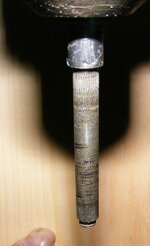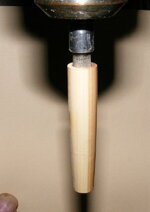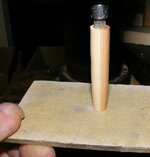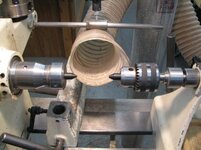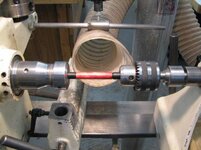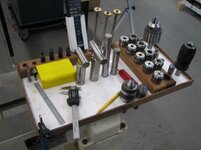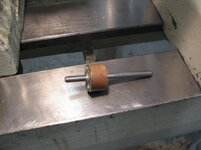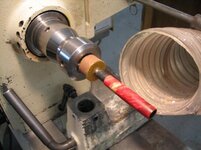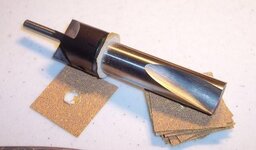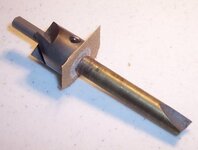Here is the method I came up with...............
Those are Delrin dead centers that I make 2" long and put a bevel on each end. On the left is my Beall chuck and on the right is a "live" Jacobs chuck. It rotates just like a live center and can be used for all kinds of things.
Here's a blank mounted.
This is the tool holder I made that fits on the end of the lathe. What I wanted to show you is the extra Delrin centers. Each center will do about 5 pens or so before they need cleaning. Even though they're Delrin a little glue will stick sometimes so when they all get glue on them I clean them up all at once. About 5 minutes and they're all like new. The red handle in the picture is an Xacto knife. 99% of the time they pop right off but if I get sloppy then I use the Xacto knife to cut the CA about 1/32" from the end with the lathe on at about 2000 rpm.
After I'm done applying CA I clean up the ends with this......
This is a sanding mill I made a long time ago. I was going to make a little tutorial on how to make one but another member started selling metal ones and I didn't want to step on his toes. This took about an hour to make and it probably has less than $2 worth of material in it. I've been using it for about 2 years and it's still going strong.
Here's a photo of it ready to go................
The black part is a Delrin sleeve. I make all my sleeves for my pen mill out of Delrin. The shaft on the sanding mill is the same size as the shaft on my pen mill so they are all interchangable. A couple quick licks with the lathe at about 750 and I'm good to go.

